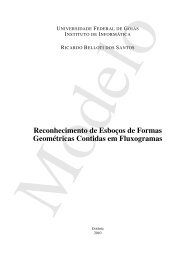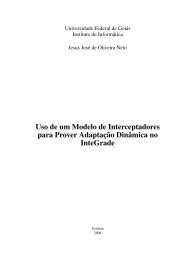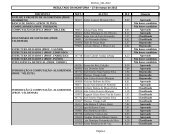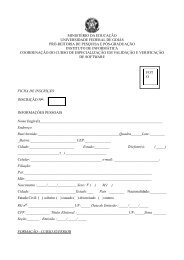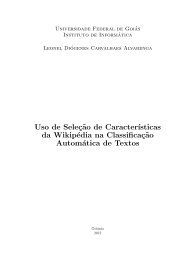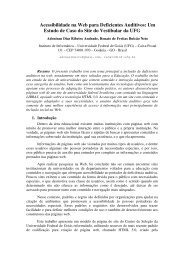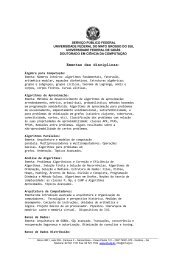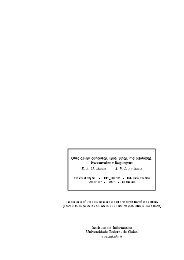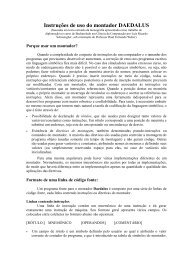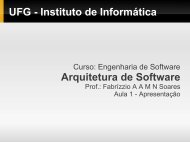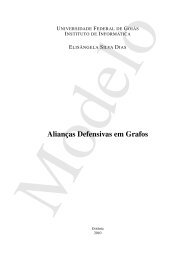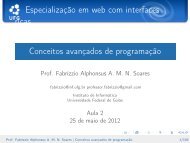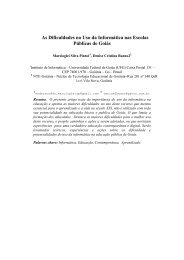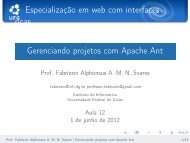Evolutionary Computation : A Unified Approach
Evolutionary Computation : A Unified Approach
Evolutionary Computation : A Unified Approach
Create successful ePaper yourself
Turn your PDF publications into a flip-book with our unique Google optimized e-Paper software.
3.5. GENETIC ALGORITHMS 41<br />
Define selection probabilities p(i) for each parent i<br />
so that p(i) is proportional to u(i).<br />
Generate m offspring by probabilistically selecting parents<br />
to produce offspring.<br />
Select only the offspring to survive.<br />
End Repeat<br />
Notice that the pseudo-code actually specifies a particular form of selection, called fitnessproportional<br />
selection. It is easy to show that using this selection mechanism, individuals<br />
in the current population with average fitness will produce on average one offspring, while<br />
above-average individuals produce more than one and below-average individuals less than<br />
one (Holland, 1975).<br />
Figure 3.7 illustrates the effect that this has on the average fitness of an evolving population.<br />
Notice first that fitness-proportional selection appears to be stronger initially than<br />
that of ES, but then weakens considerably. The second, and more striking, outcome to note<br />
is that, since all parents die off after one generation, it is possible for the average fitness of<br />
the next generation (the offspring) to drop. Is this desirable For simple landscapes, probably<br />
not. But for more complex, multipeaked landscapes this can decrease the likelihood of<br />
converging to a local optimum.<br />
3.5.1 Multi-parent Reproduction<br />
Another important difference between GAs and the other models is the way in which offspring<br />
are produced. From the beginning, Holland stressed the importance of sexual reproduction<br />
as a source of variation in the offspring produced (Holland, 1967). The basic idea is<br />
that offspring inherit gene values from more than one parent. This mixing (recombining) of<br />
parental gene values, along with an occasional mutation, provides the potential for a much<br />
more aggressive exploration of the space. Holland’s initial ideas for this took the form of a “1<br />
point crossover” operator in which a randomly chosen initial segment of genes was inherited<br />
from one parent and the remaining segment inherited from a second parent. These ideas<br />
were later generalized to “2 point crossover” and “n point crossover” operators (De Jong,<br />
1975).<br />
Since all of these crossover operators are equivalent for individuals with exactly two<br />
genes, we run a GA with crossover (GA-X) on landscape L2 and plot the effects on average<br />
population fitness in figure 3.8.<br />
In this case, crossover provides an additional source of variation involving larger initial<br />
steps, improving the initial rate of convergence. Since crossover does not introduce new<br />
gene values, its influence diminishes as the population becomes more homogeneous, and the<br />
behavior of GA-X becomes nearly identical to a GA with no crossover.



